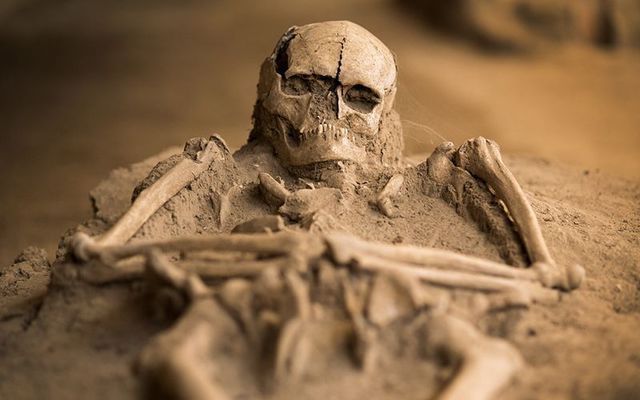Around 100 skeletal remains dating back to the Middle Ages have been discovered during excavations for a new hotel in Dublin city center.
The remains were discovered in an area off Capel Street where an abbey once stood.
The abbey - named St. Mary's - opened in the 12th century and was used by the Savigniac and Cistercian religious orders.
However, carbon dating of one of the burial sites discovered on Capel Street predates that opening by 100 years, suggesting the presence of a Christian settlement at the site before the abbey was built.
The archaeological dig has also uncovered the foundations of several buildings dating back to the 17th century in addition to part of a domestic house known as "Dutch Billies", which was constructed at the beginning of the 18th century by Dutch settlers who came to Ireland after King William of Orange claimed the English throne.
An old Presbyterian meeting house dating back to 1667 was also found during the digs.
Beannchor hospitality group, which is currently developing the Bullitt Dublin Hotel on a site between Mary's Lane and Abbey Street, commissioned the recent excavations on a site formerly occupied by the old Boland's Bakery.
The skeletal remains discovered at the site will be carefully excavated and sent for further analysis before being given to the National Monuments Service.
Meanwhile, the structures found during the excavation of the site will be incorporated into the design of the new hotel.
The Presbyterian meeting house, for example, will be a central component of the hotel's bar and restaurant, while the Dutch Billies house will also be preserved.
The surviving ovens from the old Boland's Bakery will be renovated and repurposed.
Beannchor also plans to reopen a Victorian laneway between Capel Street and Meeting House Lane as part of the new development. The lane has been closed to the public for more than 140 years.
Beannchor hopes to open a variety of new dining options and the hotel bar by the first half of 2024, with the Bullitt Hotel expected to open 12 months afterward.
Edmond O’Donovan, director of excavations for Courtney Deery Heritage Consultancy (CDHC), told RTÉ News that recent discoveries were very significant, stating that St. Mary's Abbey was Ireland's largest and most wealthy abbey before it was demolished in the 16th century.
"It was demolished after 1540 when the monastery was disbanded by Henry VIII and was later the site of a 17th century Presbyterian Meeting House," O'Donovan told RTÉ News.
O'Donovan added that it was "intriguing" that the excavation uncovered skeletal remains that predated the abbey, stating that the earlier burial sites were potentially from an earlier Christian or monastic site.

Love Irish history? Share your favorite stories with other history buffs in the IrishCentral History Facebook group.




Comments